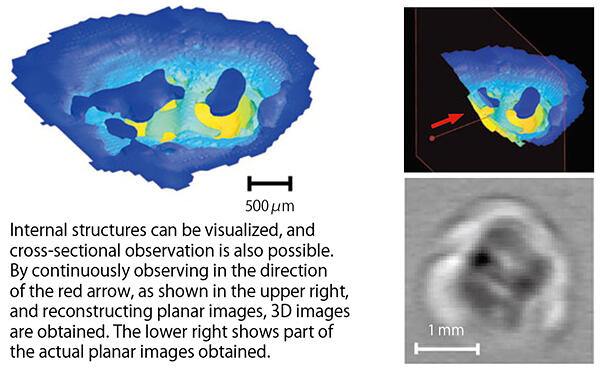Most cases of hearing loss are attributed to disorders of the cochlea in the inner ear, the organ responsible for sound located deep within the ear. The inner ear cochlea is located deep within the skull, and optical measurements cannot penetrate bone, while X-ray imaging carries radiation exposure risks, making internal observation difficult. Terahertz waves, positioned in the intermediate band between visible light and radio waves, have attracted attention as a safe and secure technology because they can observe internal structures without radiation exposure. However, with a wavelength of approximately 300 micrometers (micro meaning one millionth), it was previously impossible to observe objects at the micrometer level, which is smaller than this wavelength.
A research team led by Associate Professor Kazunori Serita from the Graduate School of Information, Production and Systems at Waseda University and Associate Professor Takeshi Fujita from the Graduate School of Medicine at Kobe University observed the cochlea in the inner ear using terahertz waves through experiments with mice. The research team focused on the fact that when intense laser light is irradiated onto nonlinear optical crystals for a short time on the order of femtoseconds, terahertz waves are generated locally and can be treated as point light sources. They developed a unique method for investigating distance and shape by measuring the time it takes for terahertz waves generated from point light sources to reflect within the cochlea and return, as well as an image analysis method using machine learning. By applying these techniques, they succeeded in visualizing the three-dimensional structure of the inner ear cochlea at the micrometer level for the first time and achieved cross-sectional observation.
These results may enable detailed diagnosis of ear diseases including hearing loss and early detection of ear disorders. Furthermore, it is expected that various in-vivo diagnoses and the development of medical devices such as new endoscopes and otoscopes utilizing terahertz waves will advance.
(TEXT: Masanori Nakajo)





